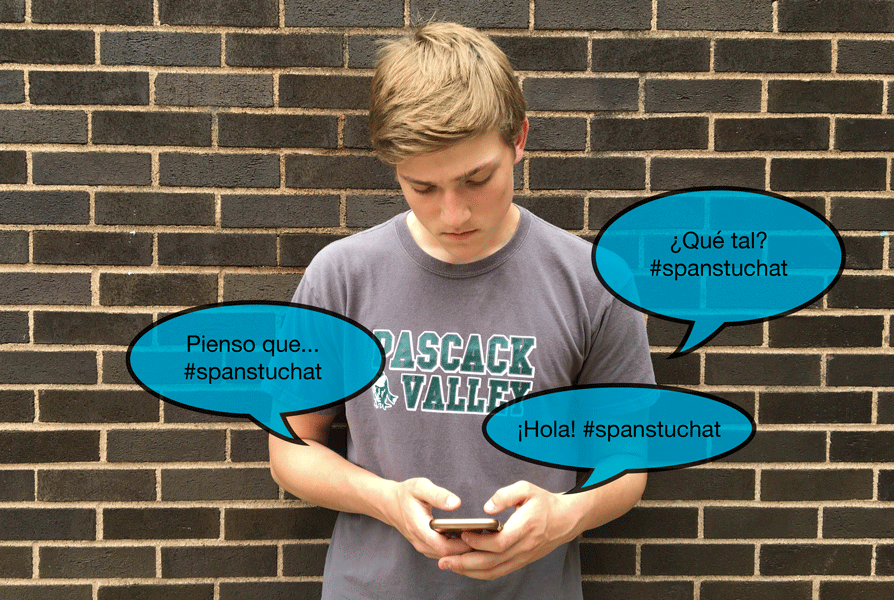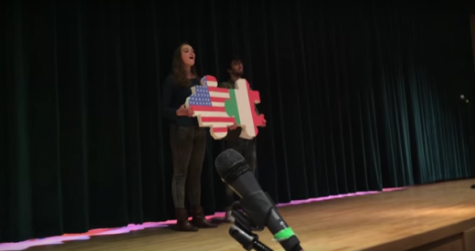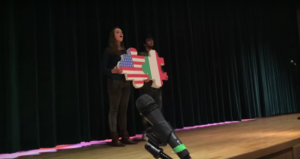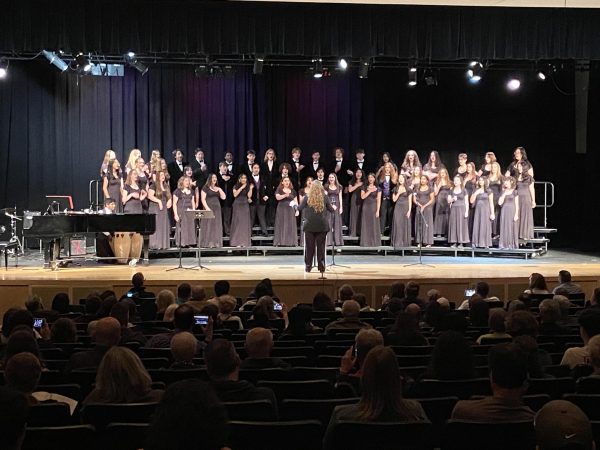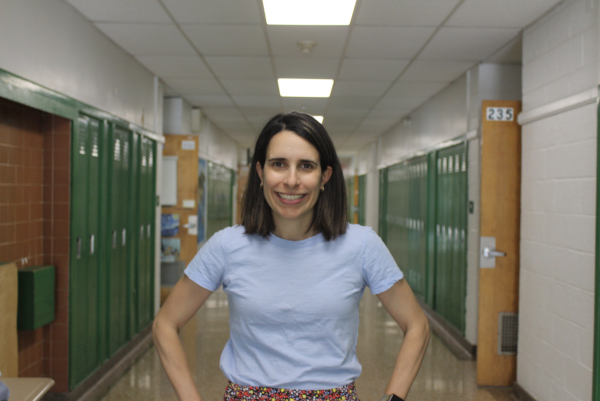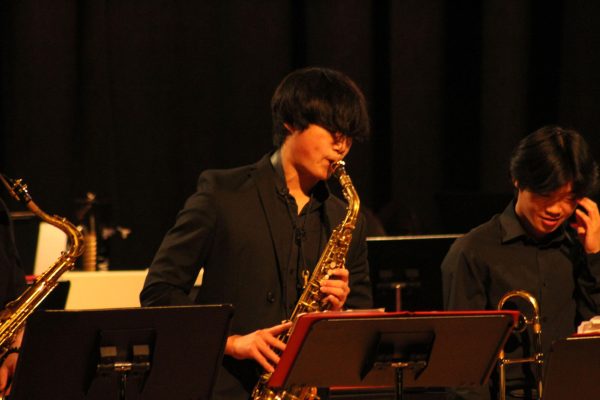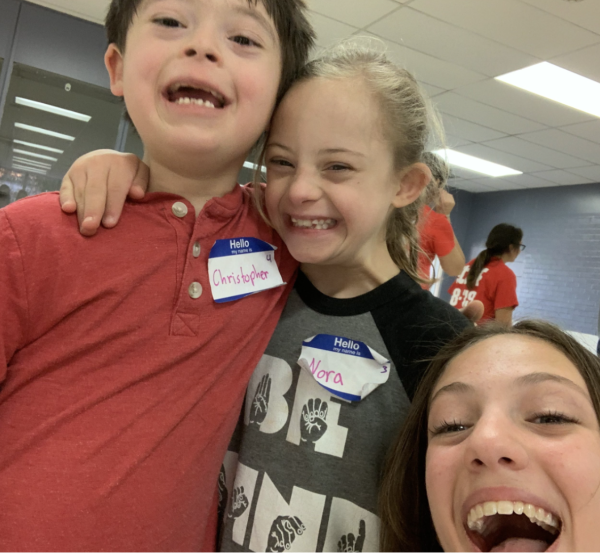A world connected by Spanish
PV Spanish students use #spanstuchat on Twitter to learn with and meet people around the world
PV sophomore Zach Olson looks at his phone, as he tweets using the hashtag #spanstuchat. This hashtag is for Spanish students around the world to talk and learn from each other.
Take a look at a Pascack Valley Spanish student’s Twitter account on a Tuesday night. Chances are, a dozen tweets will be tagged #spanstuchat— as will posts from teachers and students all over the world.
This is the first year that Pascack Valley Honors and CP Spanish 1 teacher Ms. Elena Spathis has had her classes participate in the chat. Other PV Spanish teachers, such as Mrs. Ivica Kanova and Ms. Courtney Farrell, have encouraged their classes to participate as well.
“You can see how well [you] are being understood and you can practice your skills online,” Kanova said. “Also, it is very comfortable because the other students are Spanish learners as well and you don’t have the fear of speaking to a native speaker.”
It gives students of Spanish the opportunity to see how much they can actually use the language and how it can connect them to other people who they wouldn’t otherwise know.
— Elena Spathis
The chat started with two Nebraskan teachers, Mrs. Rebecca Huls and Mrs. Kara McNeese, who wanted to find a way for their students to gain more practice speaking Spanish and to interact with new people over Twitter. Huls and McNeese began by creating the hashtag spanstuchat in 2015 and it took off from there.
The chat occurs on the first and third Tuesdays of every month from 9 p.m. to 10 p.m. It runs from September through May and welcomes Spanish speakers from all over the world to participate. Levels of Spanish can range from beginner to advanced. Huls and McNeese have had speakers from Spain, Honduras, Guatemala, and Mexico tweet in the chat.
“I think that the overall theme of the chat and why I appreciate it so much is that it gives students of Spanish the opportunity to see how much they can actually use the language and how it can connect them to other people who they wouldn’t otherwise know,” Spathis said.
The chats normally start off with questions such as “What is your name?” or “Where are you from?” and expand from there.
Como mis estudiantes ya saben, tengo una obsesión con toda la ropa ???? #spanstuchat
— Elena Spathis (@SrtaSpathis) March 8, 2017
Each chat is centered around a specific topic. Typically, they are related to upcoming holidays. There have been Valentine’s Day, Thanksgiving, and The Day of the Dead-themed chats.
“Some of the themes have to do with cultural celebrations,” Farrell said. “Other times there are cultural comparisons like ‘how do you celebrate a holiday versus how they celebrate a holiday in a Spanish speaking world.’”
The Spanish Student Chat allows users to talk with other Spanish students throughout the world that they would otherwise not get the chance to talk to.
“What binds you to these students is that you both share a common language other than English, which is a really unique thing,” Spathis said.
The ability to converse with another fledgling Spanish speaker is a focal point for the Pascack Valley Spanish department. Students are learning Spanish not only in the classroom but, with the help of the Spanish Student Chat, outside the walls of PV and on Twitter as well. Students are no longer just learning to take a test and receive a grade, but to converse in another language with real people.
¡Hola! Me llamo Isabella, y soy de Nueva Jersey. Estoy muy triste; ¡es la última charlar! #spanstuchat
— Isabella 🙂 (@itjan20) May 17, 2017
“If I am talking to new people and am behind a screen and not in class I am more likely to say more and try to expand my vocabulary even if I make a mistake because I know if I make a mistake it doesn’t matter,” Honors Spanish 2 student, Isabella Tjan said.
Another interesting aspect of the chat is that the conversations and answers to questions are not planned. Unlike writing tasks in a classroom, students participating in the chat are only given a few minutes to respond to each question.
“I think the greatest benefit it provides is that it is spontaneous communication,” Farrell said. “When you are tweeting you have time to think about it but you are also trying to respond to the questions as they come up, so it is a real form of interpersonal communication.”
A7: Me encanta tomar el sol, especialmente cuando yo estoy en la playa. Me gusta caminar mi perro y ver a las puestas de sol. #spanstuchat
— Olivia Jones (@LivJonesy) May 17, 2017
For future chats, Huls plans on trying to get other teachers, students, and native speakers to moderate the chat for more involvement and to share new ideas via Twitter. McNeese sees the chat also including an aspect of listening to questions and responding in a video.
“I think our students need to realize [the importance] of speaking Spanish or speaking another language. By practicing it with the speakers of the language, they get the feeling that it is real,” Kanova said. “It’s not just something that they can lose once they leave the classroom.”

